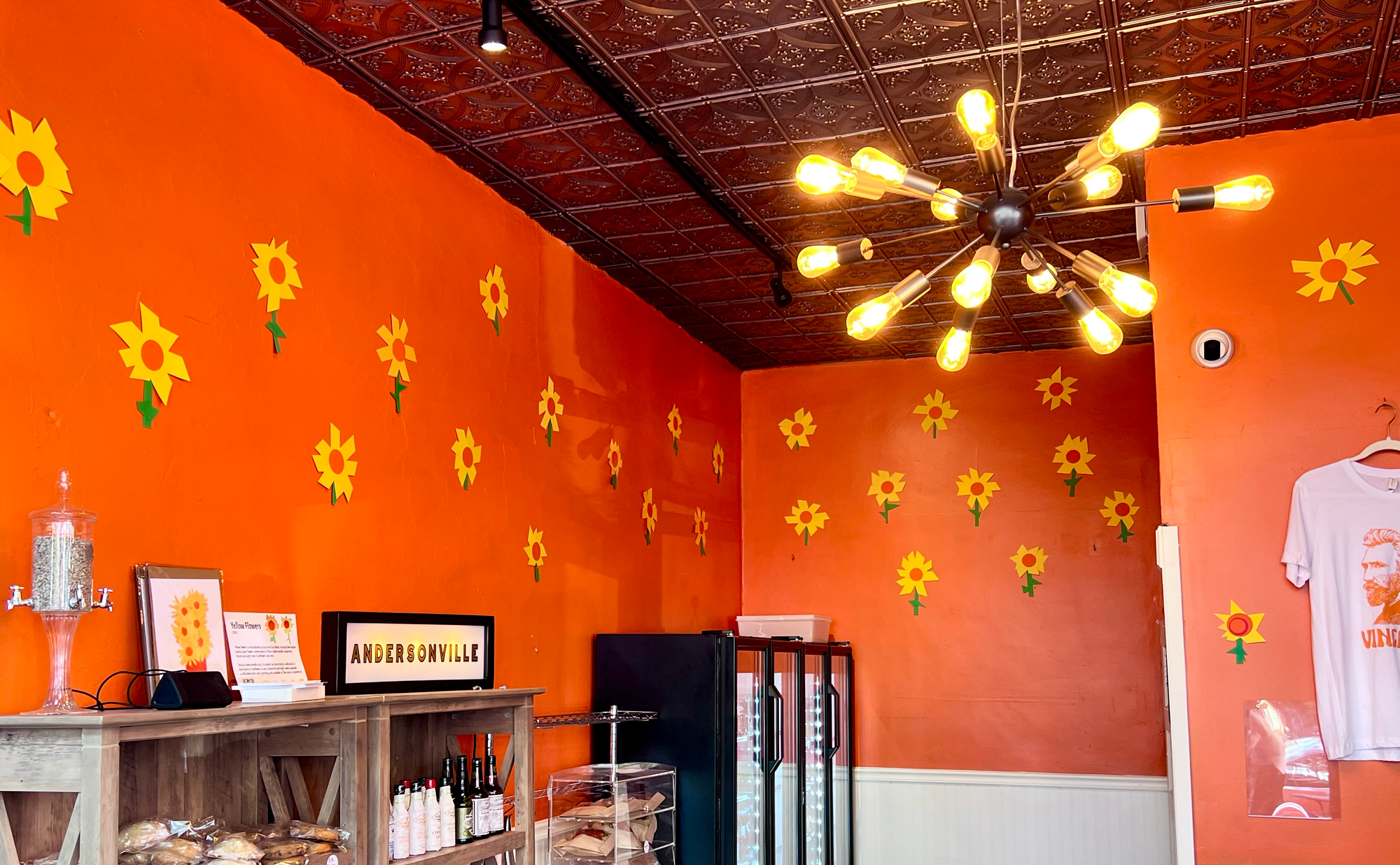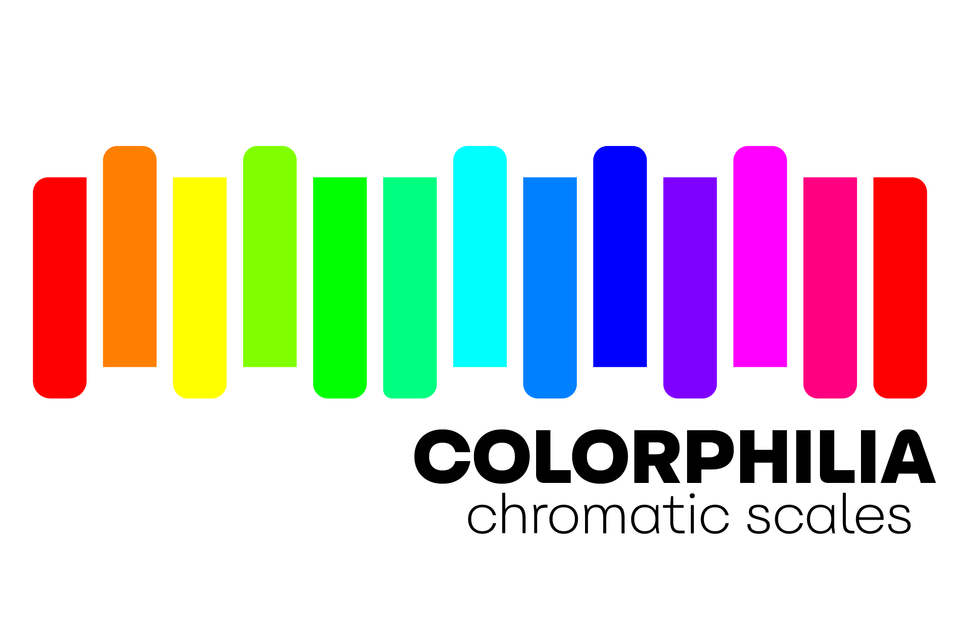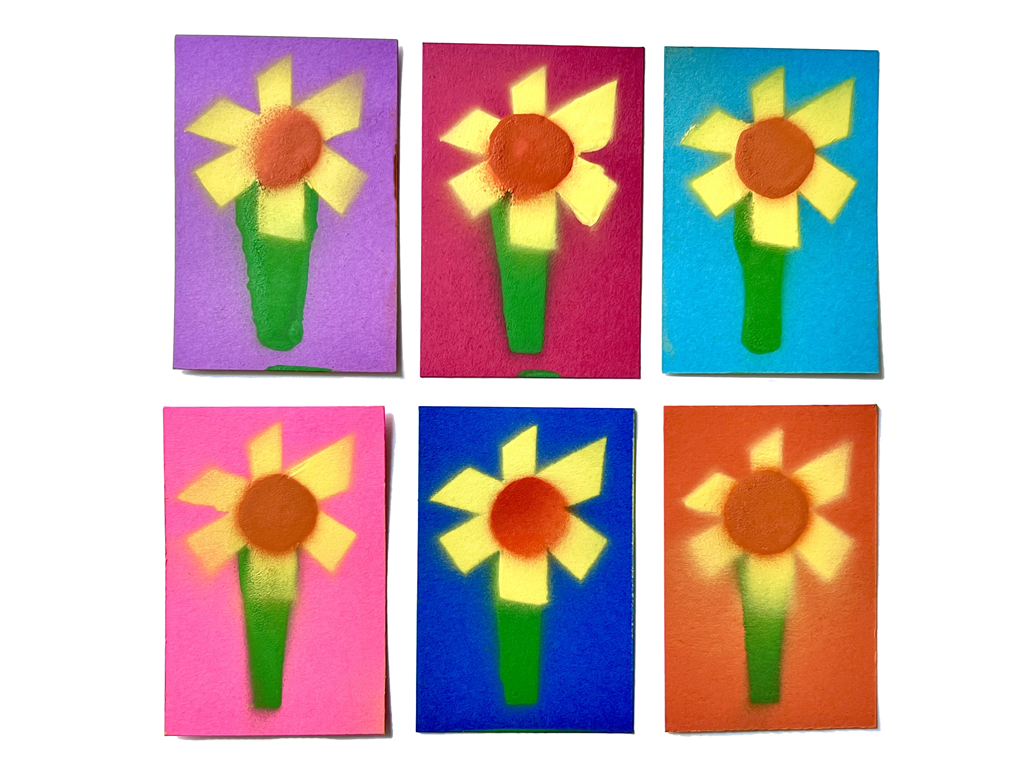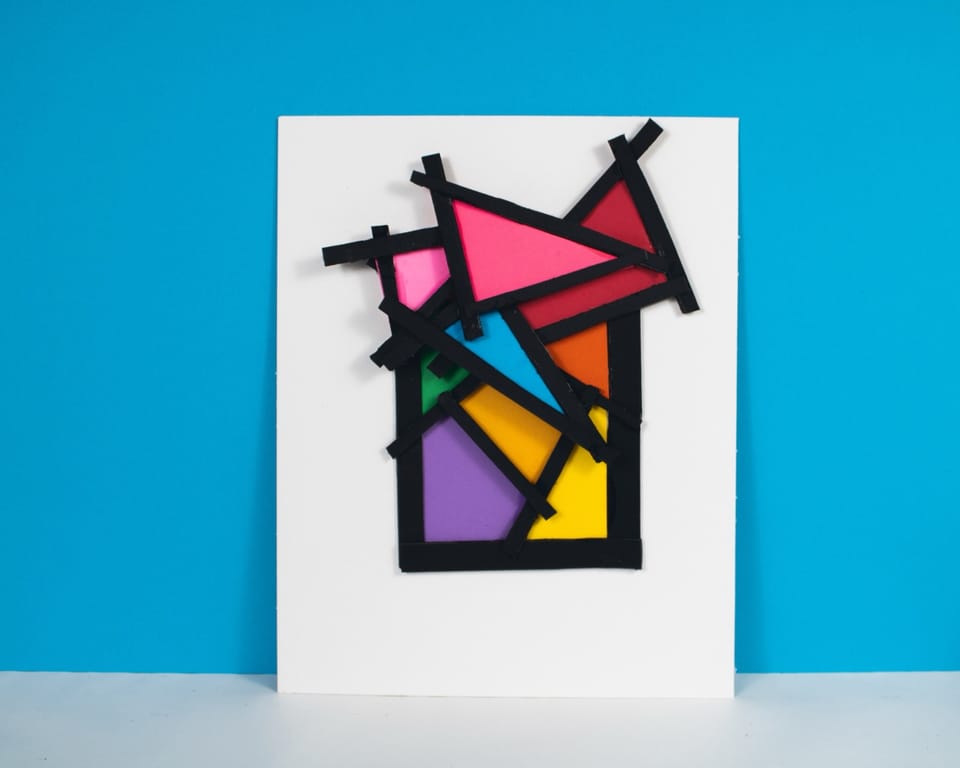Vincent van Gogh, the Sunflower.
I've spent months reading van Gogh's letters, and I just created a few collections of sunflowers inspired by him.

Over the past few months, off and on, I’ve been reading through the letters of Vincent van Gogh, primarily in correspondence with his younger brother Theo. While I had bought the book years ago, one day I randomly had it in my bag when I went to get a happy hour glass of wine, quite coincidentally, at a place called “Vincent”, named after the artist.
In somewhat related news, I've just put up an installation of paper sunflowers at its brother location Theo, and created a collection of affordable sunflowers prints inspired by van Gogh.
Van Gogh, the original Colorphiliac
I was immediately taken with his verbal use of descriptive color. So many of his letters, originally written in Dutch then French, were not only about the colors in his paintings, the cost of colored paints, but also just the colors he saw in the world.
I don’t know how to explain his sense of color. Vincent gorged on color. As he wrote to Emile Bernard: “Ah, my dear pals, we crazy ones, let’s anyway enjoy with our eyes, shall we?”
As a person, van Gogh paid attention to color in the world around him, and color was the language he used to express himself. He had a heightened perception of color.
He wrote to his sister Willemien:
I definitely want to paint a starry sky now. It often seems to me that the night is even more richly coloured than the day, coloured in the most intense violets, blues and greens.
If you look carefully you’ll see that some stars are lemony, others have a pink, green, forget-me-not blue glow. And without labouring the point, it’s clear that to paint a starry sky it’s not nearly enough to put white spots on blue-black.
Even when you read the letter he wrote to Theo about the painting in which he depicted his bedroom, he was very specific in what the original colors where. In his words:
This time it’s simply my bedroom, but the color has to do the job here, and through its being simplified by giving a grander style to things, to be suggestive here of rest or of sleep in general. In short, looking at the painting should rest the mind, or rather, the imagination.
The walls are of a pale violet. The floor — is of red tiles.
The bedstead and the chairs are fresh butter yellow.
The sheet and the pillows very bright lemon green.
The blanket scarlet red.
The window green.
The dressing table orange, the basin blue.
The doors lilac.
And that’s all — nothing in this bedroom, with its shutters closed.
The solidity of the furniture should also now express unshakeable repose.
Portraits on the wall, and a mirror and a hand-towel and some clothes.
The frame — as there’s no white in the painting — will be white.
Vincent and the Sunflowers
By 1888, there is a theme of sunflowers which develops.
As he wrote to Theo:
I’m painting with the gusto of a Marseillais eating bouillabaisse, which won’t surprise you when it’s a question of painting large Sunflowers.
Vincent was passionate about sunflowers. Some would call it an obsession. He wanted to surround himself with them.
I have 3 canvases on the go, 1) 3 large flowers in a green vase, light background (no. 15 canvas), 2) 3 flowers, one flower that’s gone to seed and lost its petals and a bud on a royal blue background (no. 25 canvas), 3) twelve flowers and buds in a yellow vase (no. 30 canvas).4 So the last one is light on light, and will be the best, I hope. I’ll probably not stop there. In the hope of living in a studio of our own with Gauguin, I’d like to do a decoration for the studio. Nothing but large Sunflowers.
Sunflowers were not just a random flower. They contained personal meaning and were his way of making the ephemeral last forever.
Next door to your shop, in the restaurant, as you know, there’s such a beautiful decoration of flowers there; I still remember the big sunflower in the window. Well, if I carry out this plan there’ll be a dozen or so panels. The whole thing will therefore be a symphony in blue and yellow. I work on it all these mornings, from sunrise. Because the flowers wilt quickly and it’s a matter of doing the whole thing in one go.
Sunflowers weren’t just something he painted, it was something he surrounded himself with. When he moved into a new home, he described the decorations to Theo:
Let’s say that in a year you come to spend a holiday here and in Marseille, it will be ready then — and the way I envisage it, the house will be just full of paintings from top to bottom. The room where you’ll stay then… will have a decoration of large yellow sunflowers on its white walls.
Opening the window in the morning, you see the greenery in the gardens and the rising sun and the entrance of the town.
But you’ll see these big paintings of bouquets of 12, 14 sunflowers stuffed into this tiny little boudoir with a pretty bed and everything else elegant. It won’t be commonplace.
“Sunflowers are for yellows”
In one way, the sunflowers were the medium for the color, not the other way around.
Unfortunately there are no vineyards here, otherwise I’d promised myself to do nothing else this autumn. There are some, but for that I would have had to go and stay in another village.
On the other hand the olive trees are very characteristic, and I’m struggling to capture that. It’s silver, sometimes more blue, sometimes greenish, bronzed, whitening on ground that is yellow, pink, purplish or orangeish to dull red ochre.
But very difficult, very difficult. But that suits me and attracts me to work fully in gold or silver. And one day perhaps I’ll do a personal impression of it, the way the sunflowers are for yellows. If only I’d had some of them this autumn. But this half-freedom often prevents one from doing what one nevertheless feels able to do. Patience, however, you’ll tell me, and it’s indeed necessary.
Vincent, the sunflower
But perhaps, he himself was the sunflower.
He wrote to the French artist Emile Bernard in August 1888:
Because once again the colour suggests the scorched air of harvest time at midday in the blistering heat, and without that it’s a different painting…
Next, I’m attempting to do dusty thistles with a great swarm of butterflies swirling above them. Oh, the beautiful sun down here in high summer; it beats down on your head and I have no doubt at all that it drives you crazy. Now being that way already, all I do is enjoy it.
And the following sentence is
I’m thinking of decorating my studio with half a dozen paintings of Sunflowers.
He celebrates being connected to nature and finding the sun invigorating.
Here I’ll have more and more the existence of a Japanese painter, living close to nature like a petit bourgeois. So you can easily tell that it’s less gloomy than the decadents.
The bright sky empowered him.
To want to see another light, to believe that looking at nature under a brighter sky can give us a more accurate idea of the Japanese way of feeling and drawing. Wanting, finally, to see this stronger sun, because one feels that without knowing it one couldn’t understand the paintings of Delacroix from the point of view of execution, technique, and because one feels that the colours of the prism are veiled in mist in the north.
And there is something that he identified with about the philosophy of the Japanese artist.
If we study Japanese art, then we see a man, undoubtedly wise and a philosopher and intelligent, who spends his time — on what? — studying the distance from the earth to the moon? — no; studying Bismarck’s politics? — no, he studies a single blade of grass.
But this blade of grass leads him to draw all the plants — then the seasons, the broad features of landscapes, finally animals, and then the human figure. He spends his life like that, and life is too short to do everything.
Just think of that; isn’t it almost a new religion that these Japanese teach us, who are so simple and live in nature as if they themselves were flowers?
And we wouldn’t be able to study Japanese art, it seems to me, without becoming much happier and more cheerful, and it makes us return to nature, despite our education and our work in a world of convention.
And if Vincent were a flower, he’s identify as the sunflower; the flower he sketched, drew and painted on numerous occasions. He fought with Paul Gauguin about some of his sunflower paintings he felt Gauguin had appropriated. Because sunflower paintings weren’t just paint on canvas, they were successful self-portraits, in the way he was unable to create a self-portrait of himself that he truly liked.
Commerce, van Gogh, and my "Yellow Flowers" collection
I’ve been long appreciated Japanese art, artisans, and artistry. More than a decade ago, I wrote about visiting the netsuke exhibit at the LACMA (LA County Museum of Art):
As we walked between the netsuke, we marveled at the combination of talent and humour combined into the wearable, utilitarian works of art. The kosode and kimono both lack pockets, so Japanese men would connect a container called a sagemono to hold their money, tobacco or other curios. The netsuke were used as a counterweight to hold the pouches over the sash.
While they could look like anything and were made from any material, the netsuke truly demonstrate how creativity works best when constraints are placed. The pieces could not have sharp edges, as they have to be worn, and must have a hole or two to run the cord through. The artists would stay true to the original shape the material, at times creating intricate designs in response to natural, organic deformities in the ivory, tusk or boxwood.
I concluded the same piece with a thought:
During the 16th and 17th centuries, one of the genres chosen by the Dutch masters to paint was called ‘Vanitas’, where they would choose a rotting or decaying still life object as their subject, to remind the viewer of the fleeting nature of life. The phrase itself was originally found, repeatedly, in the book of Ecclesiastes, and means ‘everything is futile’ or ‘everything is meaningless’. Ironically, ‘vanitas’ is a translation from the Hebrew hevel, the same word as the first victim of fratricide, Abel, and is sometimes translated as ‘vanity’.
This echoes, at least to me, van Gogh’s obsession with painting sunflowers.
Van Gogh constantly battled with the ideas of art and commerce. He, too, referenced the Dutch masters and their cupboard art.
What must make it easier for the Japanese to stuff their works of art into drawers and cupboards is that you can roll kakemonos but not our painted studies, which would eventually flake.
Nothing would make it easier for us to place our canvases than to get them widely accepted as decorations in bourgeois homes. As in Holland in the old days.
And here in the south it would do a hell of a lot of good to see paintings on the white walls. But go and look: big, coloured Julien medallions everywhere — horrors. And alas, we won’t change anything in this state of affairs.
However — cafés — perhaps we’ll decorate them later on.
In an attempt to combine commerce, art, and van Gogh, I just created three dozen paper sunflowers for Theo, the “quick takeaway” brother shop to the Vincent bar-restaurant. Alongside this, I’ve drawn a dozen different versions of sunflowers in vases, obviously inspired by Vincent and Theo, available in affordable prints $25 and under, and $6 greeting cards.

You can see the collection either by going to ezrabutler.art or scrolling below.



